I tested the 12L Challenge dehumidifier in my damp Victorian home over winter — I haven’t spotted any signs of mould for the first time in five years
The Challenge 12L dehumidifier doesn’t have too many bells and whistles, but I can already see the difference it’s made to my damp home
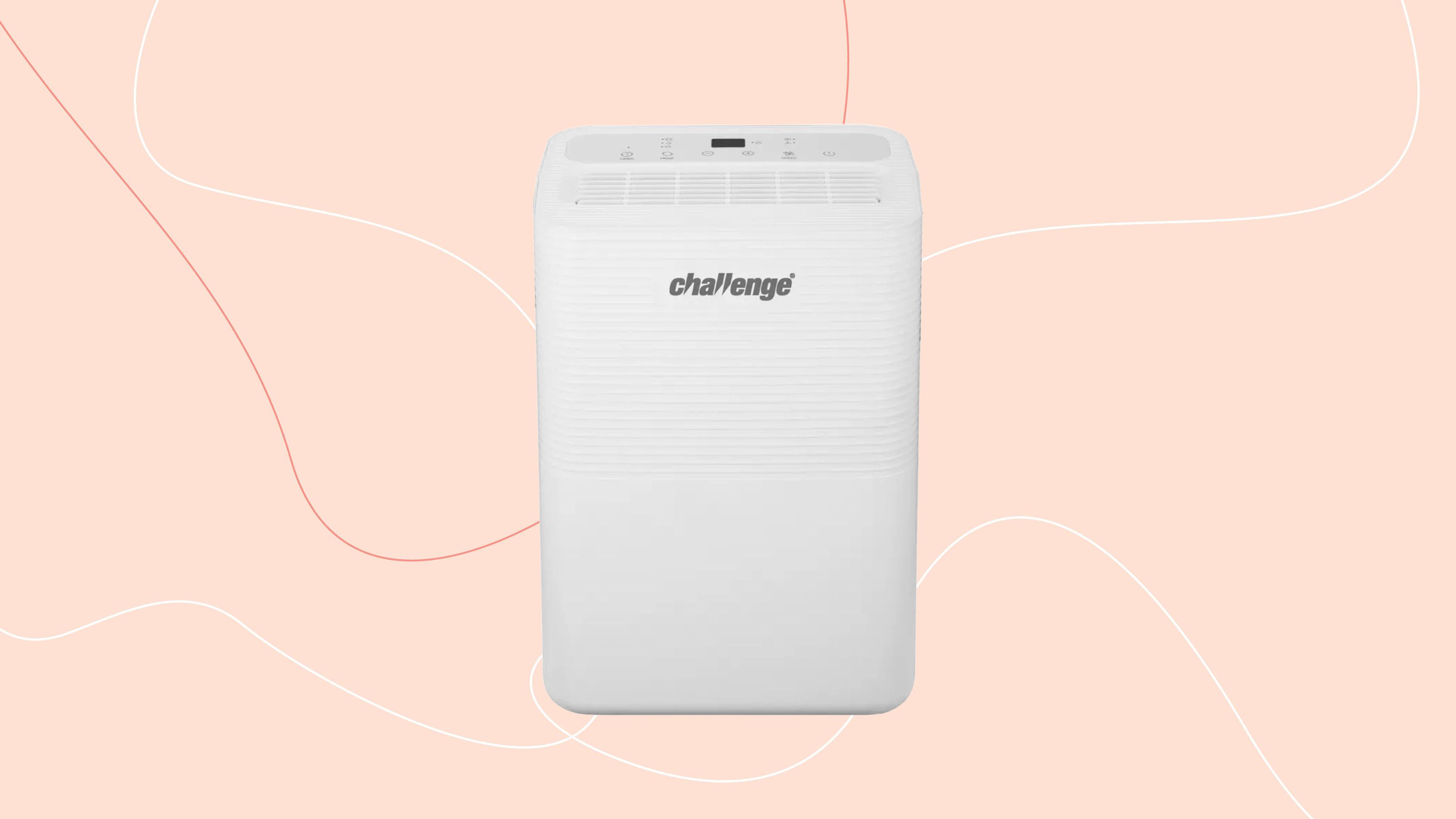
The Challenge D015B 12L Dehumidifier isn’t the most high-tech or advanced dehumidifier on the market - but it gets the job done, and that has to be commended. With three modes to choose from, this dehumidifier can help to banish damp and condensation from a home, dry a whole load of laundry in mere hours, and keep your bedroom free from excess moisture while you sleep. In my opinion, it’s a fuss-free alternative for those looking for a cheap and affordable dehumidifier.
-
+
Extremely affordable
-
+
Powerful extraction rate
-
+
Easy to use
-
+
Impressive laundry mode
-
+
Timer is an extra perk
-
+
Multiple sizes available
-
-
Quite loud
-
-
Not as high-tech as other dehumidifiers on the market
Why you can trust Ideal Home

This Challenge 12L dehumidifier review puts this affordable dehumidifier through its paces to see whether it’s possible to get more bang for not-as-much buck, especially for those struggling with damp and mould during the winter months.
Of course, as someone who writes about home appliances and maintenance on a daily basis, I know that the best dehumidifiers are the key to reducing damp and condensation in a home. They can also work wonders to dry clothes indoors in winter. But despite this - and living in a damp Victorian home - I’ve never really had a proper dehumidifier. Instead, I’ve relied on a tiny, cheap dehumidifier with a pathetic extraction rate and one simple on/off button.
For me, testing the Challenge 12L dehumidifier was a massive step up. While I know what to expect from an efficient and effective dehumidifier, this offering allowed me to put these features to the test in my own damp home for a month. And although the condensation-busting qualities impressed me, the laundry mode really sold it for me.
Challenge 12L Dehumidifier product specs
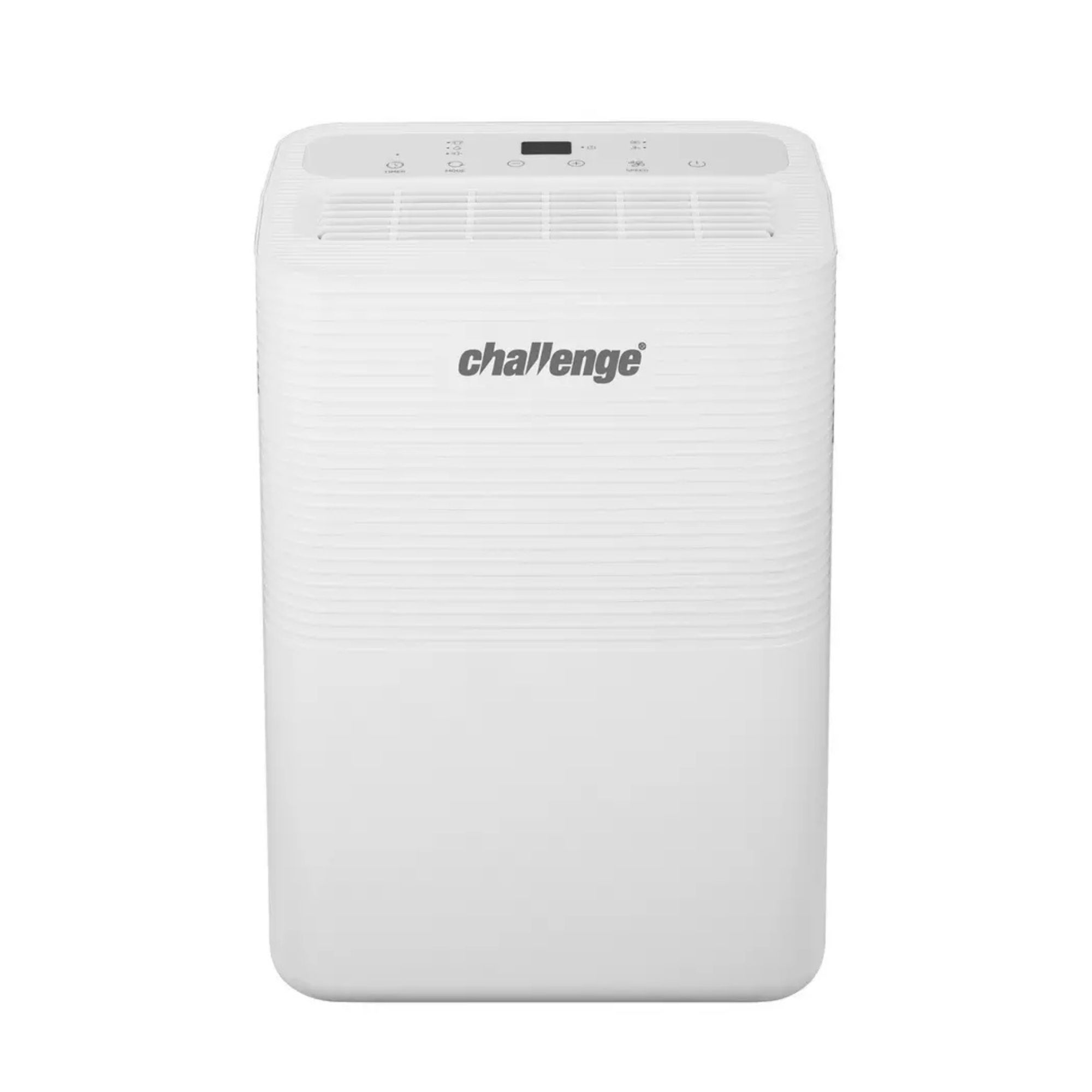
- Type: Compressor
- Extraction rate: 12L/day
- Water tank capacity: 2L
- Max room size recommended: 16-24m²
- Noise level: 42dB
- Power: 280W
- Dimensions: H40.2, W28.2, D20.4cm
- Weight: 10.5kg
- Automatic humidity sensor: Yes
- Continuous drain option: Yes, but you’ll have to buy a separate hose
- Laundry mode: Yes
- WiFi connectivity: No
- Timer: Yes
- Price: £130
Unboxing and setting up
The Challenge 12L dehumidifier came in a relatively small box, but like all dehumidifiers, it was fairly hefty in size. At 10.5kg when empty, this particular model sits towards the middle of lightweight dehumidifiers like the EcoAir DD1 Simple MK3 Dehumidifier at 6kg and the Pro Breeze High Capacity Smart Dehumidifier which weighs a whopping 16kg.
So, while I struggled a little to get it through the door and out of the box, this is just part and parcel of ordering an electrical appliance that should (hopefully) pack a big punch.
I was also impressed to see that the Challenge 12L dehumidifier and the instruction manual were packed tightly and neatly in the box, as electrical appliances are often surrounded by unnecessary cardboard and plastic that just doesn’t need to be there.
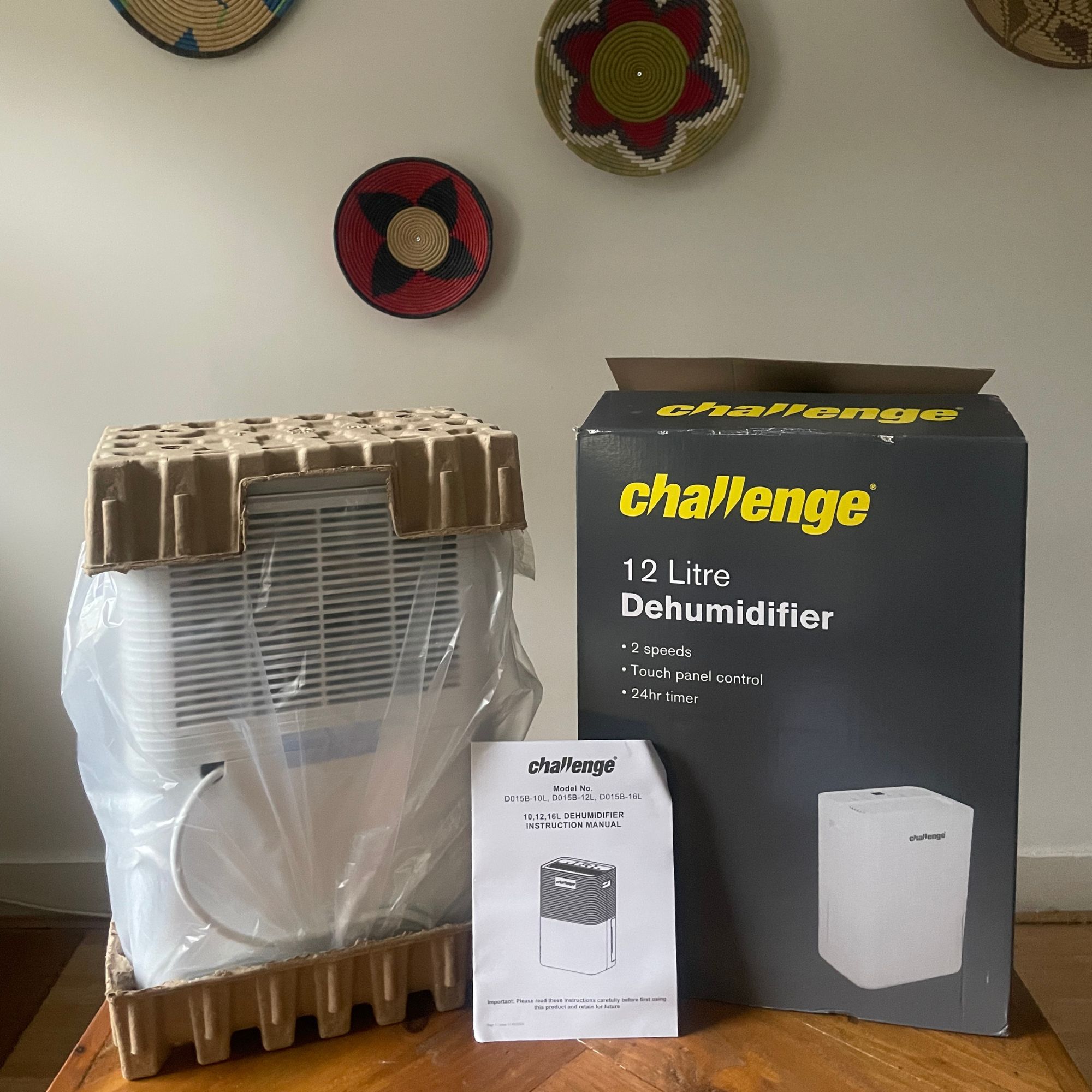
However, this dehumidifier boasted a simple cardboard scaffolding top and bottom, and the appliance itself was then wrapped in recyclable plastic. So, it scored some eco-points from me on that front.
Sign up to our newsletter for style inspiration, real homes, project and garden advice and shopping know-how
In terms of the set-up, there was none. The Challenge 12L came pre-assembled and almost ready to go. I only had to remove the plug from where it had been neatly stored in the water tank for transportation.
It’s worth noting that Challenge advises standing the dehumidifier upright on a steady, even surface for 24 hours before use to allow the condenser to settle and prevent damage. So, I left it on my dining room table and spent some time looking rather than touching it for a while.
Design
As dehumidifiers go, the Challenge 12L Dehumidifier is sleek, simple, and pretty unassuming. In fact, I’d go as far as to say that it looks like 99% of the other dehumidifiers on the market - which isn't necessarily a bad thing.
I always think white is a smart choice for appliances, and the Challenge D015B 12L offers this white colourway and a traditional dehumidifier shape with the addition of some fluted plastic on the front and a relatively large brand logo.
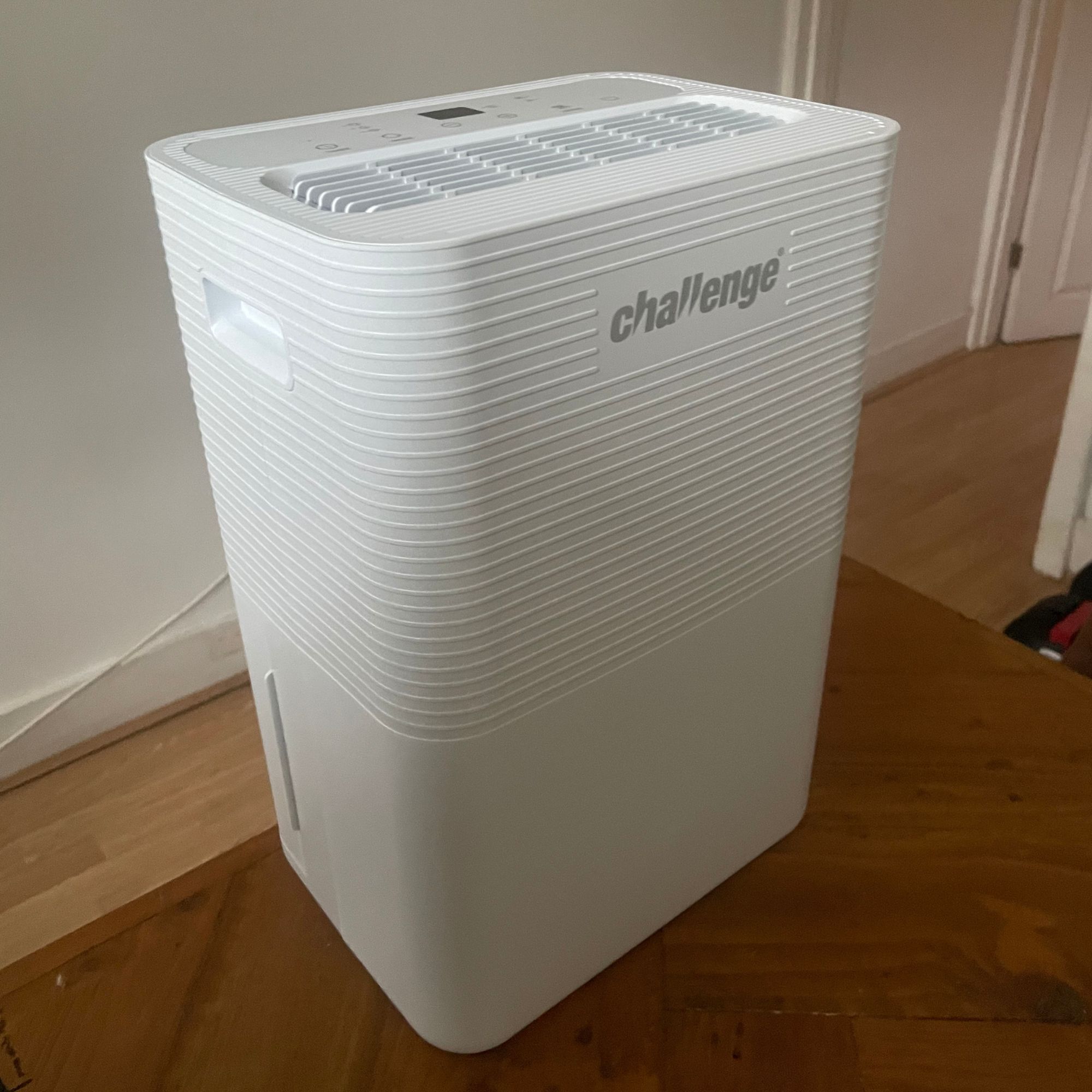
My only initial quibble with the design was that the water tank (and the filter) is on the back of the machine, which I know from experience isn’t easily accessible and somewhat awkward to open if you don’t want to pick it up and turn it around every time. I was also annoyed that there was no viewing window to check on the water levels, but I later found out that this wouldn’t be an issue.
And while this dehumidifier does give you the option for continuous drainage should you wish to go down that route, it doesn’t provide you with the tools to do this. So, you’ll need to buy a hose with an inner diameter of 10mm and a sink or drainage hole at floor height if you want to do this in the future.
Ease of use
After waiting the recommended 24 hours before using it for the first time, I finally turned the Challenge D015B 12L Dehumidifier on. To do this, I only had to press the power button.
I was intrigued to see that, for such an affordable dehumidifier, there were a lot of functions, buttons, and information on the control panel. These include:
- Power button
- Fan speed button - use to select the wind speed of High or Low
- Plus and minus buttons - use to select the desired humidity level between 30% and 90% or select ‘CO’ for continuous use
- Operation Mode - press to switch between Silent Mode, Dehumidifying Mode, and Laundry Mode
- Timer - press the button to activate timer, and then use the plus and minus buttons to select length of time required
- Water full - indicator next to the right of the screen to indicate when the water tank is full and needs emptying
Switching between these modes was extremely easy, and the buttons were incredibly responsive. The LCD screen also offered all of the information I needed to know to choose the desired settings and to offer insights into its effectiveness.
In fact, the LCD screen always shows the current level of humidity - and I must admit that it was pretty exciting seeing the numbers drop as the minutes went by.
Performance
Testing the Challenge 12L Dehumidifier in my home was a breeze. To understand how well it fared as a whole, I used it in multiple rooms in my three-bedroom Victorian home - including my office (which doubles up as the utility room to dry laundry), my living room (which is connected to a kitchen with an extractor fan that’s currently broken), and my bedroom (which sleeps two humans each night). I also switched the modes according to my needs during this testing process.
Laundry Mode
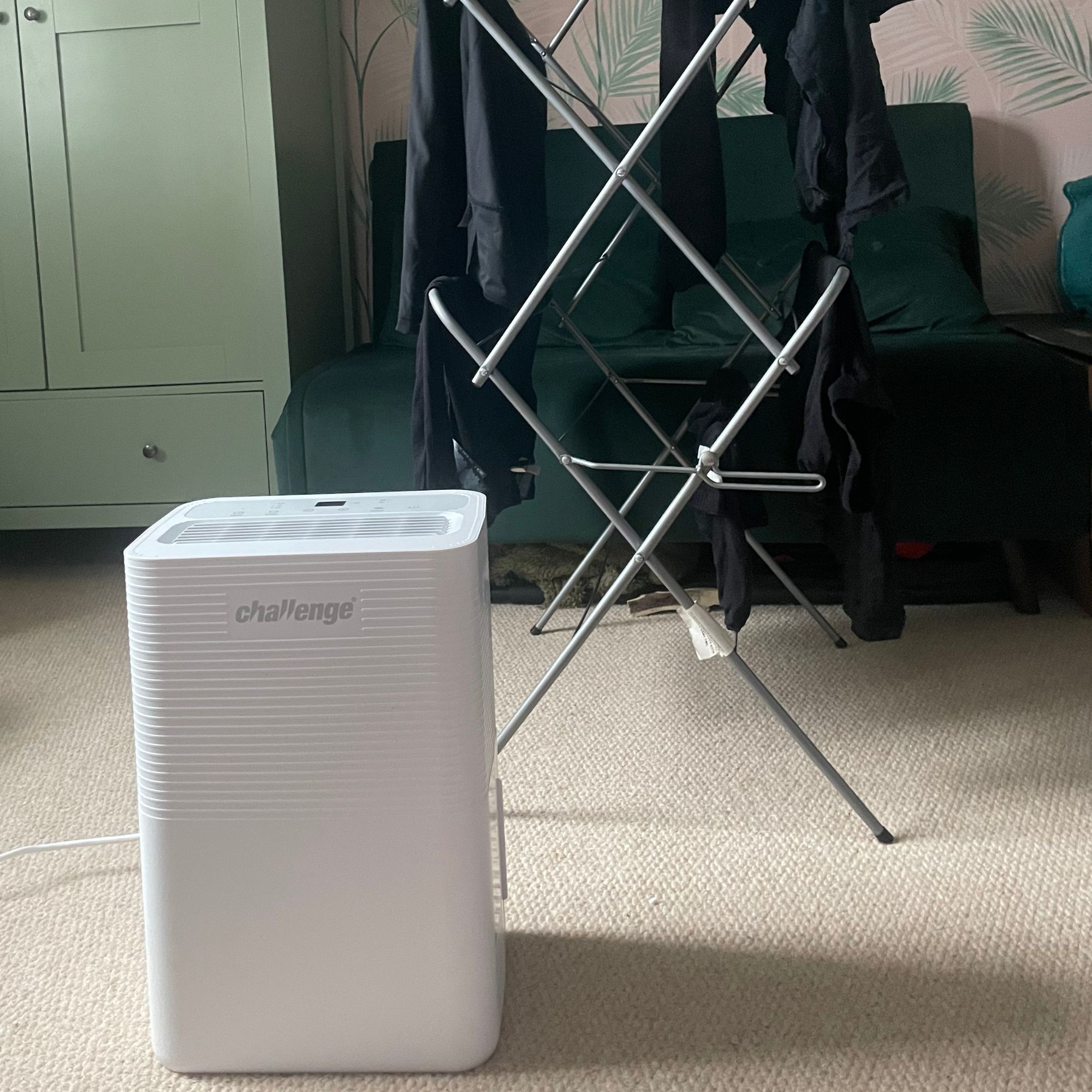
Ask any of the Ideal Home team, and they’ll tell you I’m a little bit obsessed with the best heated airers. As someone with limited space to dry laundry, I relish the fact that my heated airer can dry my laundry in just a few hours so I can tidy my clothes away and turn my office back into an office. But I also know that the heated airer vs dehumidifier debate is a close one, so I was definitely intrigued to see how well the Challenge 12L Dehumidifier Laundry mode would compare.
Timing is my biggest concern when drying laundry indoors in winter, as I want to get my clothes dry as soon as possible. So, I put a timer on my phone to see how long it took for a load to dry, and I must admit that I was impressed with the five-and-a-half-hour drying time - which is slightly less than how long it usually takes for my heated airer to dry my clothes. The water tank was almost completely full by the time it had finished, too.
My only niggle with using the dehumidifier to dry clothes was that it didn’t offer the same warmth of freshly-dried clothes from a heated airer, and the clothes didn’t smell as fresh as they did when I used my other beloved appliance. But I can’t deny that it worked its magic, and since this first initial test, I’ve actually used both my dehumidifier AND my heated airer at the same time for the past few weeks. Now, my clothes are bone dry in less than three hours.
Dehumidifying Mode
I first tested the dehumidifying mode in my living room while my husband cooked in the kitchen next to me. As we currently have a broken extractor fan, we typically open the window when cooking up a storm - but you can still sense the extra moisture in the air and spot the condensation build-up on the window. So, I was intrigued to see how the dehumidifier would fare in such a space.
I turned the Challenge 12L Dehumidifier on about halfway through my husband’s cooking session when multiple pans created steam on the hob. I was shocked to see that the humidity level was just over 75%, which is way above the recommended humidity level for a room.
To combat this, I used the minus button to select my desired humidity level (I went for 55%) and let the dehumidifier get to work. All in all, it took just one and a half hours to bring the humidity level down - even when my husband continued to cook during this time.
Silent Mode
Up until this point, I hadn’t really found any negatives to note about the Challenge 12L dehumidifier. But my first issue came when testing the Silent Mode overnight in my bedroom - as I (apparently very wrongly) assumed that this would be a quiet mode. However, I struggled to hear any difference between the normal Dehumidifying Mode and the Silent Mode.
As someone who likes a bit of white noise while I sleep, I must admit that the noise level didn’t irritate me too much. But my husband, who prefers dead silence when he’s trying to sleep, absolutely hated it. In the end, he actually went to sleep on the sofa downstairs to get some peace and quiet.
In this mode, the LCD screen also doesn’t change in the slightest, so the full force of the lights filled the whole of my bedroom. I solved this by popping a sock over the screen, but this may be something to consider if you’re a light sleeper.
However, I do think it’s important to note that Challenge calls this a ‘Silent’ mode rather than a ‘Sleep’ mode, which is perhaps more of what I was expecting. So, I guess Challenge hasn’t aimed for it to be the sleeping companion offered by other dehumidifier brands. Because of this, I can’t knock it too much.
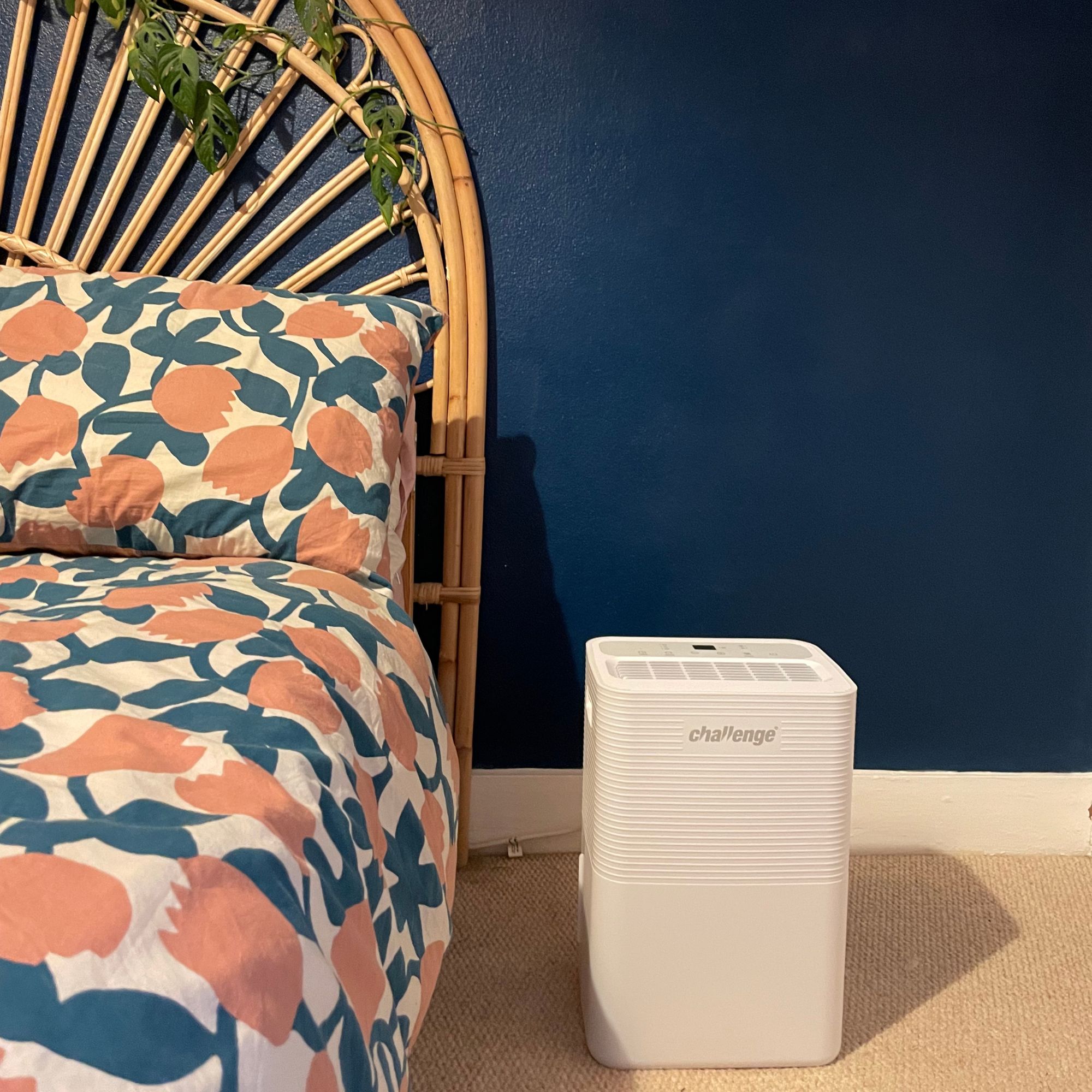
After these three official tests, I continued using these modes and functions for a few more weeks in my home. My aim was to use it as naturally as possible to ensure the dehumidifier became like any other essential appliance in my home, and it’s fair to say that it did. The drier my home became, the less I struggled with condensation on my windows, the air felt less damp, and for the first winter in five years I didn’t spot a single sign of mould on my walls.
I also found that the Timer function was handy to have - especially during the day when I can often get caught up in work and forget to turn off appliances.
Energy use
Like many others, I’m currently on a mission to save energy at home, so I must admit that I was a little conscious of adding another appliance to my weekly roster. But it’s important to note that how much it costs to run a dehumidifier ultimately depends on two things: the exact dehumidifier you’re using and the current energy price cap.
At just 280W, the Challenge D015B 12L Dehumidifier has relatively low wattage compared to other models on the market, which means it’ll set you back around 6p to 7p an hour, depending on your tariff and the current price cap.
During my testing process, I didn’t notice any significant change in my energy bills. In fact, one day, when I ran a load of washing, used both my dehumidifier and heated airer AND stayed at home on a gloomy winter’s day (which meant I had lights and the TV on for most of the day), I could see from my energy provider’s app that I’d spent just £1.88 on electricity.
However, if you have a particularly damp house and plan on using it every day for multiple hours, this is a factor you’d need to consider if you’re conscious of rising energy bills.
Noise levels
Ultimately, dehumidifiers are an appliance - and most appliances make noise when they’re running. This is also the case with the Challenge 12L dehumidifier, which runs at 42dB. This decibel rating is at the louder end of the compressor dehumidifier spectrum and something that I did notice throughout my testing process.
However, I do live in a small house and don’t have any rooms larger than 3x3m, which meant that I was always sitting (or sleeping) just a short distance away from the appliance every time it was on. This meant that I heard the full brunt of the dehumidifier, which was slightly irritating when I tuned into it. This was especially true when the Laundry Mode was on, as this was undoubtedly the loudest mode. But when I ignored it and got on with my work or had the TV on in the background, I must admit that I sometimes forgot it was turned on.
If you’re looking for a quiet dehumidifier, this might not be the option for you. But if you have a larger home or don’t mind the white noise that comes from a household appliance making your home more hospitable, then it’s something that you can live with. I definitely could.
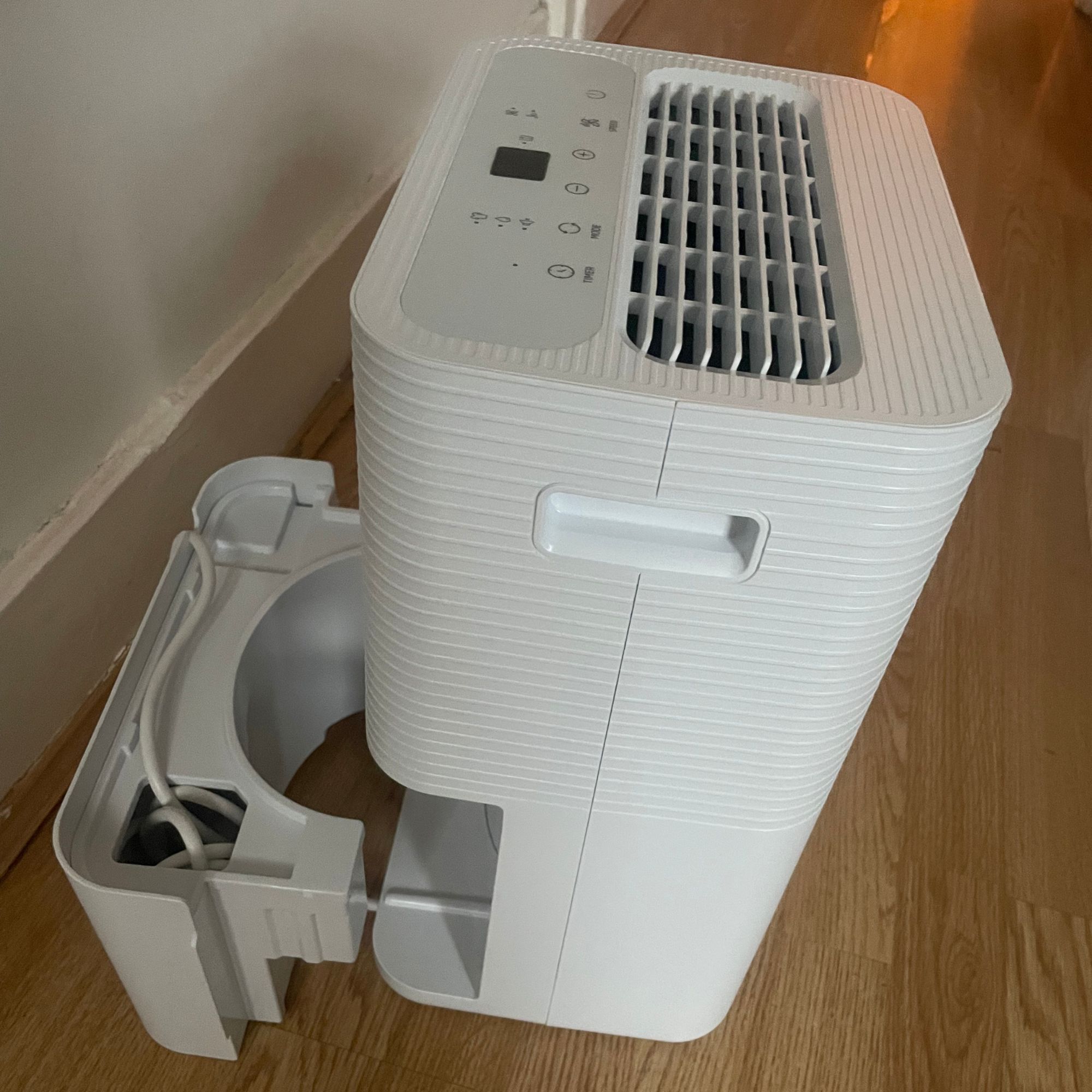
Portability
As mentioned earlier, the Challenge 12L dehumidifier comes in at 10.5kg, so you have to put some welly into moving it around. However, there are built-in handles on each side of the dehumidifier, which made moving it from room to room pretty easy when I got used to its weight. Of course, some castor wheels on the bottom would be great for those with limited movement or mobility issues, but I’m thankful that I had the ability and strength to move it by myself.
As I have a home that’s on the smaller side, I also found that the 1.8m cord length was plenty long enough for the rooms in my house. However, I will say that as it’s so important to put a dehumidifier in the right place, the cord might be too short for those looking to use this dehumidifier in bigger rooms.
Maintenance

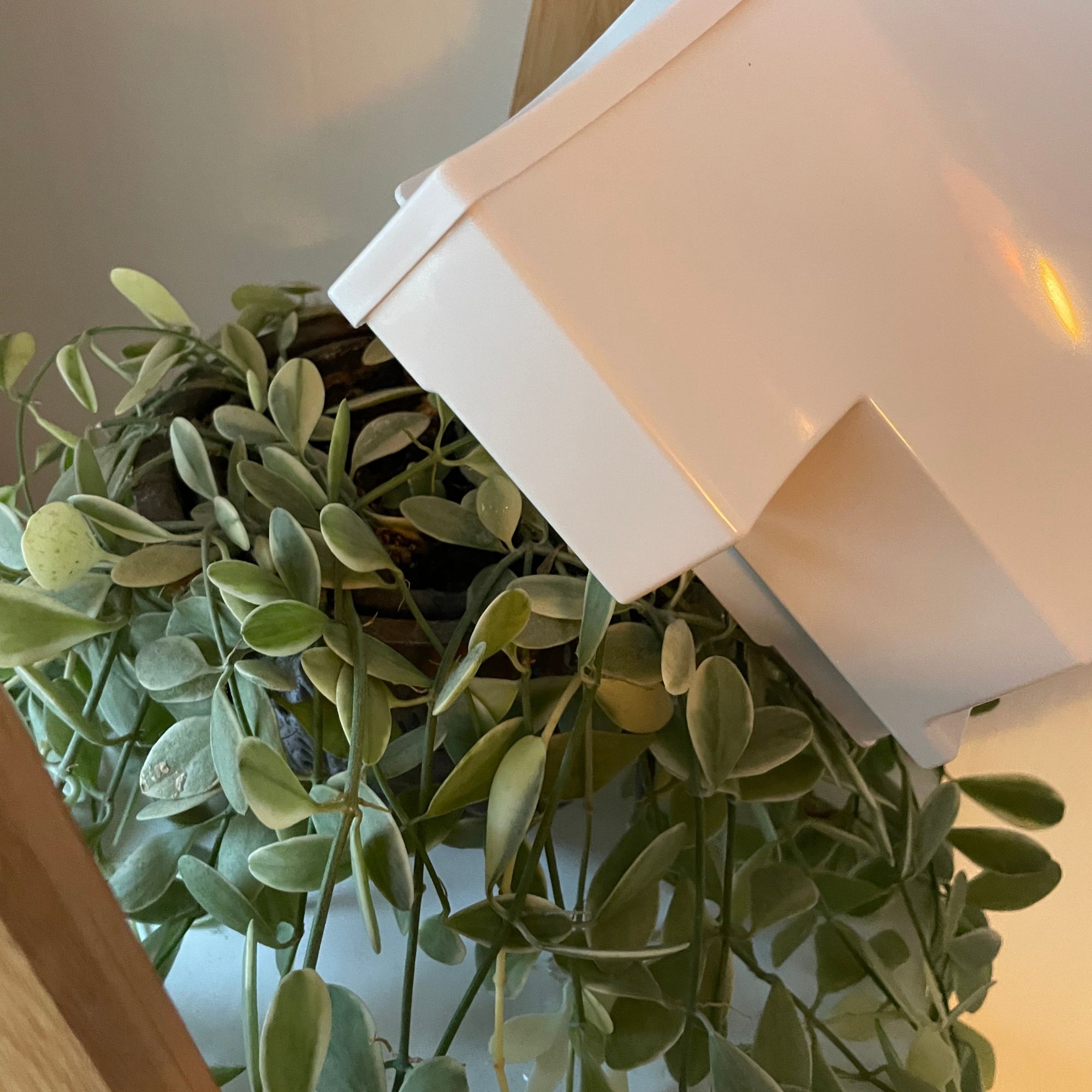
In terms of the maintenance side of things, the Challenge 12L dehumidifier is fairly low maintenance. All you need to do is remember to wipe it with a damp cloth every so often and empty it regularly - and I got into a habit of emptying it after every use to ensure it was always fresh and ready to go when I wanted to use it next time.
Thankfully, there’s no way you’ll forget to empty this dehumidifier, as the tank indicator light will turn on and it’ll beep 15 times to alert you to the fact that it’s full. It also won’t restart again until it’s been emptied, which is a nice touch.
As mentioned before, the design of this dehumidifier meant that I either had to turn the appliance around (which is much heavier when full of water) or reach around the back to slide out the water tank. And while I thought this would be irritating, it just became second nature after a while. Then, as I like to use my dehumidifier water around the house, I often emptied the tank into my houseplants. If not, I simply emptied it down the sink.
Although I haven’t witnessed it myself just yet, this dehumidifier is also kitted out with an auto-defrosting function. So, when frost builds up on the evaporator coils, the compressor will cycle off for around 10 minutes, and the fan will continue to run until the frost disappears. Once it’s been defrosted, the dehumidifier will resume its function.
How does it rate online?
As the Challenge 12L dehumidifier has only recently launched in this specific size, there are only 12 reviews at the time of writing. However, they are all impressive reviews, with a 4.7 rating overall and 92% of customers stating that they’d recommend the product. For the most part, customers praise the model for its easy emptying and ability to dry wet laundry.
The Challenge D015B 10 Litre Dehumidifier (this appliance’s little brother) has been out for longer, though, and is essentially the exact same product but with a smaller capacity - and it has even more reviews we can use to see how the 12L model fares.
With over 180 reviews and a 4.7-star rating overall, it’s fair to say that it’s rated extremely highly online by customers using it to successfully combat condensation in their homes and dry their clothes in the winter months. One customer even wrote, ‘Easy to empty, cheap to run, I only wish we had bought one earlier.’
How does it compare to similar models?
I’d be remiss if I didn’t first compare the Challenge 12L dehumidifier to the dehumidifier that’s been crowned the ‘best overall’ dehumidifier in our guide: The MeacoDry Arete Two. This appliance received a glowing 5-star review, but it’s fair to say that these two dehumidifiers are very different.
Although the Challenge offering is competent and efficient, the MeacoDry Arete Two is a different level of dehumidifier - mostly because it doubles up as one of the best air purifiers, too. This model can also be controlled via a smartphone app and impressed our reviewer with its whisper-quiet noise level.
However, the Meaco doesn’t offer a timer (which the Challenge does), and it’s also more expensive. While the MeacoDry Arete Two 12L model retails for £199.99, the Challenge is over £60 cheaper at £130 when it’s not on sale for less.
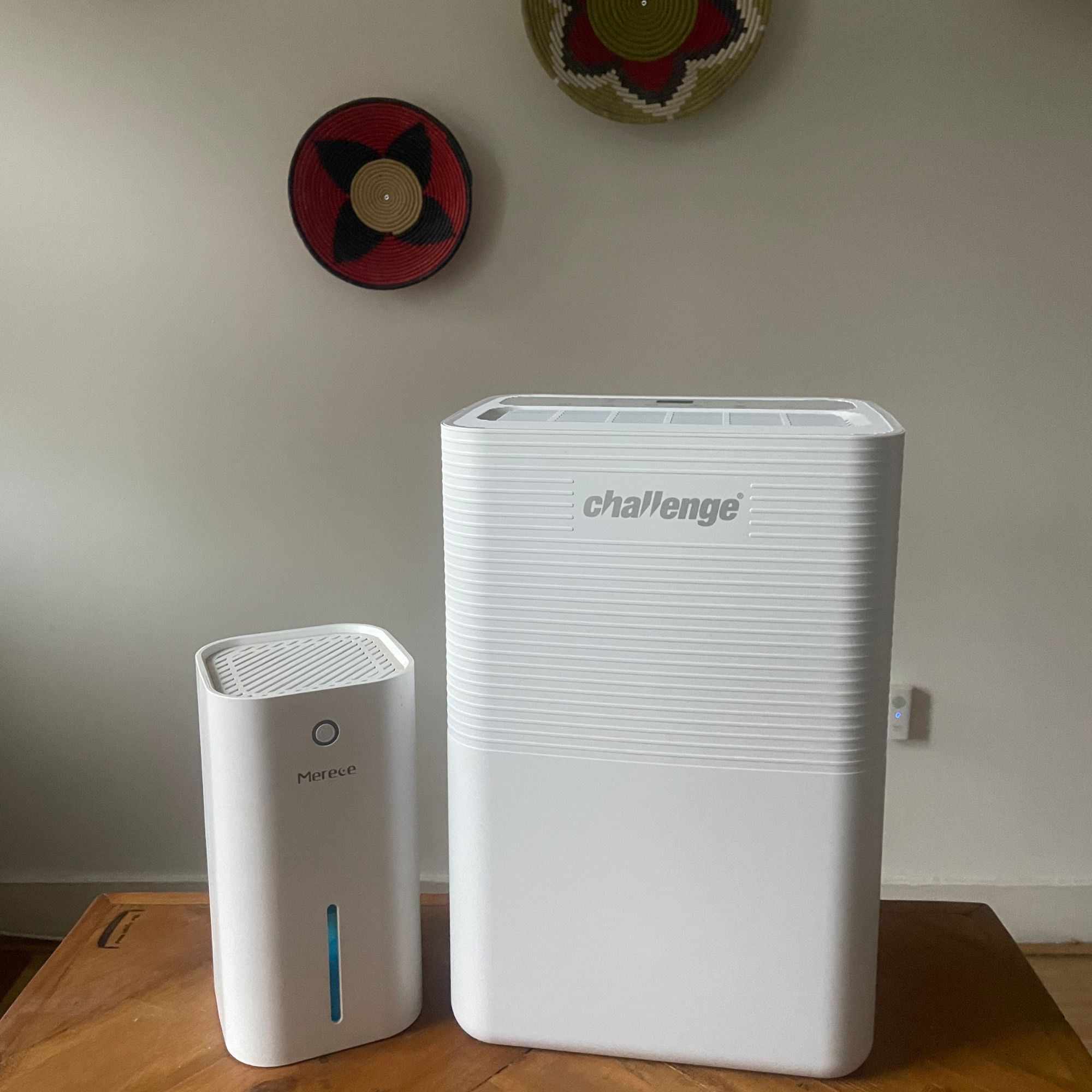
The smaller, basic dehumidifier I used to use is on the left
Because of this, the Challenge 12L dehumidifier is most similar to the ElectriQ 12L Dehumidifier, which has been dubbed the ‘best affordable’ dehumidifier in our guide. It was given a 4.5-star review and was praised for its automatic humidity sensor, built-in carbon filter, and overall efficiency. It’s also around the same price as the Challenge dehumidifier, but doesn’t offer a dedicated Laundry mode.
With this in mind, it’s worth taking stock of what you want from a dehumidifier. Do you want it to banish moisture and improve air quality? Do you want it to dry your laundry? Or do you want it to do all of the above? Once you know this, it’s easier to understand which dehumidifier will suit you best.
Should you buy the Challenge D015B 12L Dehumidifier?
In my opinion, the Challenge 12L dehumidifier will tick all of your boxes if you’re looking for an affordable dehumidifier that gets the job done. Sure, it doesn’t have as many bells and whistles as other high-tech dehumidifiers on the market, but it’s up to you to decide whether you need an in-built air purifier or Wi-Fi connectivity.
During my testing, I found this model to offer exactly what I needed in terms of extraction rate in my three-bedroom home and it battled the condensation that often builds up in my Victorian property with ease. It’s also relatively small and compact and can be tucked behind the sofa or hidden in a cupboard when you’re not using it.
Of course, if the 12L size doesn’t work for you, I’d recommend opting for the 10L or 16L models instead. They’re exactly the same but with different extraction rates, so it’s worth knowing what size dehumidifier you need for your home before parting with your money.
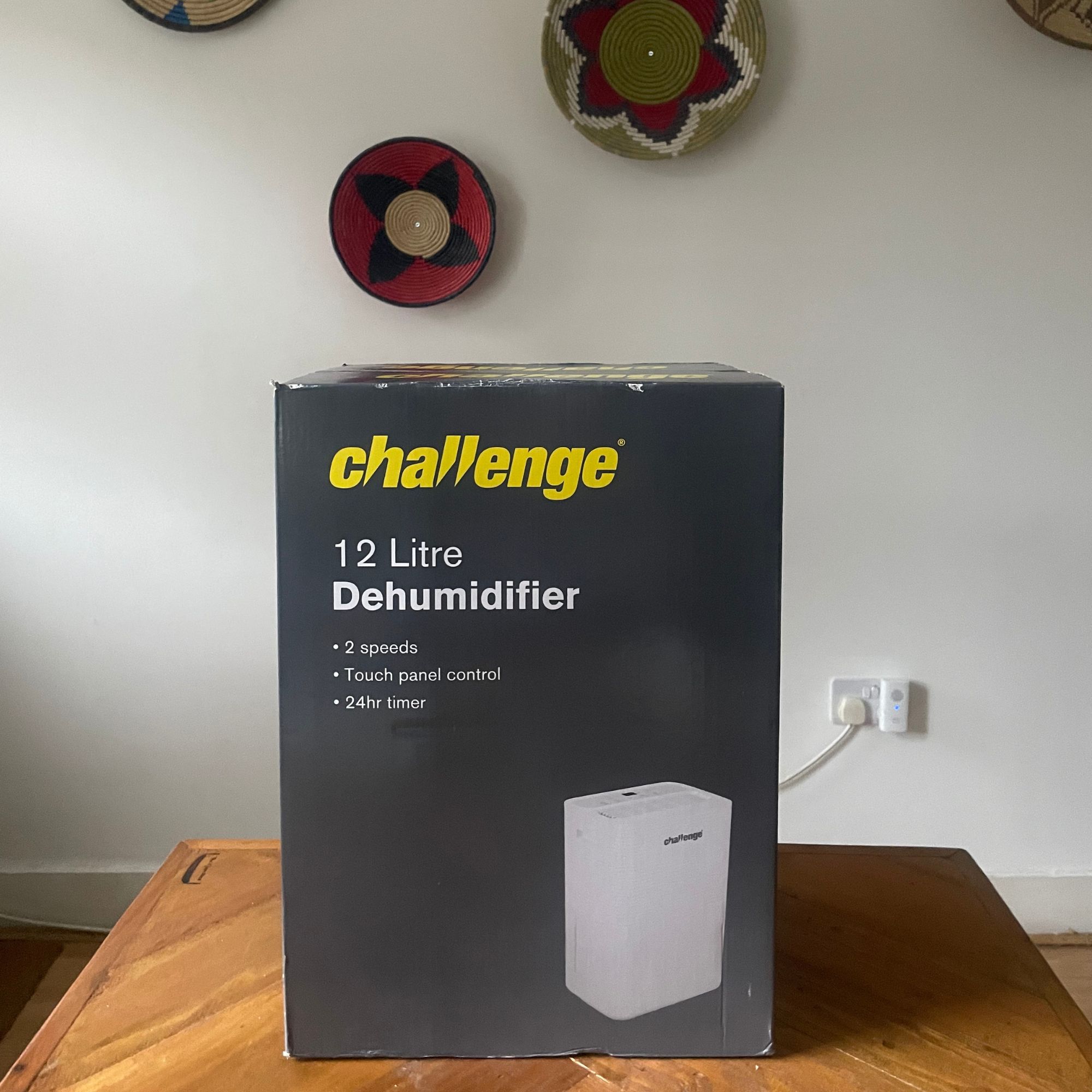
How we tested

Lauren is a Content Editor at Ideal Home, covering the House Manual section. She covers everything from home energy and heating to cleaning and organising, and she's written countless articles about dehumidifiers within this role.
Lauren is constantly on a mission to find household appliances that make your life better without costing you a fortune, and finding the next best dehumidifier is currently on her list.
You can find more information on how we review products at Ideal Home here, as well as a full breakdown of how we test dehumidifiers. For this review, the Challenge 12L dehumidifier was tested by Lauren, Ideal Home’s Content Editor for the House Manual section. She tested it in her small Victorian terrace in Kent between between December and January, which is normally when damp, condensation, and mould hits her home the hardest.
All in all, Lauren used this dehumidifier for a month, testing everything from its many modes and functions to its noise levels and portability. In addition to following our testing guidelines, she tried to use it as naturally as possible to banish the dampness and condensation in her home. This allowed her to understand how other customers would fare if they were to buy it.
At the end of the month, Lauren weighed up her findings to determine how well the dehumidifier performed and whether she thought it was worth the price tag. With this information in tow, she was able to give it a score out of 5.
Although Lauren was sent this dehumidifier to review, this in no way impacted her fair and impartial review process. She has shared her own experiences with the Challenge 12L dehumidifier while also thinking about the positives and potential pitfalls others may encounter in their own homes - especially those who struggle with damp and mould.

Lauren Bradbury has been the Content Editor for the House Manual section since January 2025 but worked with the team as a freelancer for a year and a half before that. She graduated with a Bachelor’s degree in English and Creative Writing from the University of Chichester in 2016. Then, she dipped her toe into the world of content writing, primarily focusing on home content. After years of agency work, she decided to take the plunge and become a full-time freelancer for online publications, including Real Homes and Ideal Home, before taking on this permanent role. Now, she spends her days searching for the best decluttering and cleaning hacks and creating handy how-to guides for homeowners and renters alike, as well as testing vacuums as part of her role as the Ideal Home Certified Expert in Training on Vacuums, having spent over 110 hours testing different vacuum models to date!